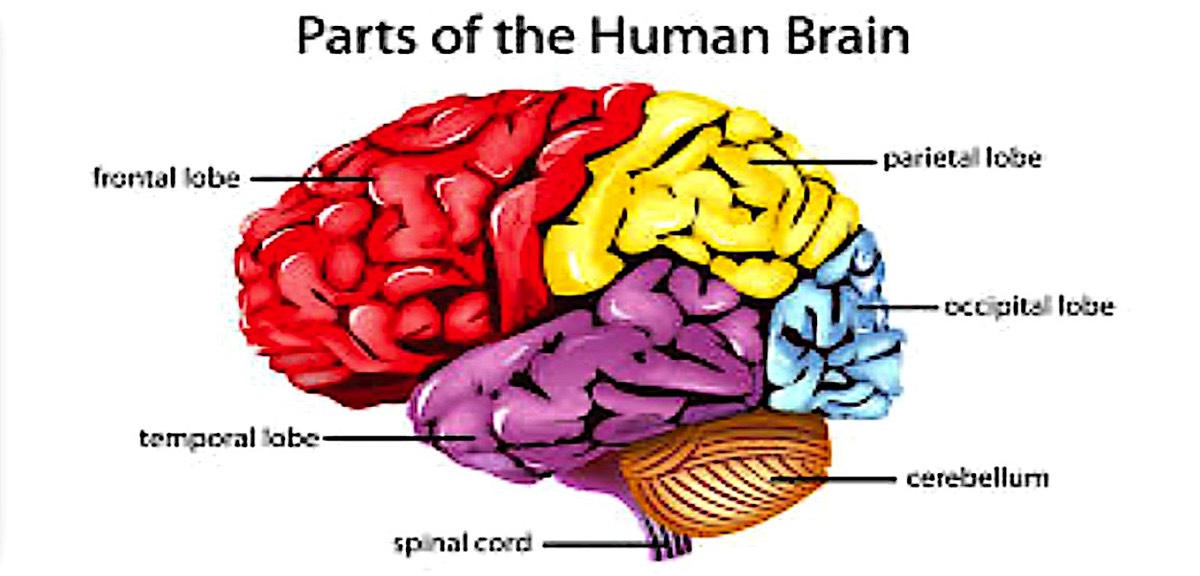

The Brain is arguably the most important organ in the human body. It controls and coordinates actions and reactions, allows us to think and feel, and enables us to have memories and feelings—all the things that make us human.
Health Science

Information BRAIN
The brain works like a big computer. It processes information that it receives from the senses and body, and sends messages back to the body.
Health Science
Latest Brain NEWS: Breakthrough in Understanding Memory,

Breakthrough in Understanding Memory. Activity taking place within the dendrites that branch off of neuron cell bodies is key to memory formation.
That makes the inner workings of dendritic translation a holy grail for understanding memory formation.
scitechdaily.com
How does the Brain work?

The brain works like a big computer. It processes information that it receives from the senses and body, and sends messages back to the body. But the brain can do much more than a machine can: humans think and experience emotions with their brain, and it is the root of human intelligence.
The human brain is roughly the size of two clenched fists and weighs about 1.5 kilograms. From the outside it looks a bit like a large walnut, with folds and crevices. Brain tissue is made up of about 100 billion nerve cells (neurons) and one trillion supporting cells which stabilize the tissue.
The human brain is roughly the size of two clenched fists and weighs about 1.5 kilograms. From the outside it looks a bit like a large walnut, with folds and crevices. Brain tissue is made up of about 100 billion nerve cells (neurons) and one trillion supporting cells which stabilize the tissue.
Structure of the Brain

The human Brain is the command center for the human nervous system. It receives signals from the body's sensory organs and outputs information to the muscles. The human brain has the same basic structure as other mammal brains but is larger in relation to body size than any other brains
Health Science
The cerebrum has a right half and a left half, known as the right and left hemispheres. The two hemispheres are connected via a thick bundle of nerve fibers called the corpus callosum. Each hemisphere is made up of six areas (lobes) that have different functions. The cerebrum controls movement and processes sensory information. Conscious and unconscious actions and feelings are produced here. It is also responsible for speech, hearing, intelligence and memory.
The functions of the two hemispheres are to a great extent different: whereas the left hemisphere is responsible for speech and abstract thinking in most people, the right hemisphere is usually responsible for spatial thinking or imagery. The right side of the brain controls the left side of the body, and the left side of the brain controls the right side of the body. This means that damage to the left hemisphere due to a stroke, for example, can lead to paralysis on the right side of the body.
The functions of the two hemispheres are to a great extent different: whereas the left hemisphere is responsible for speech and abstract thinking in most people, the right hemisphere is usually responsible for spatial thinking or imagery. The right side of the brain controls the left side of the body, and the left side of the brain controls the right side of the body. This means that damage to the left hemisphere due to a stroke, for example, can lead to paralysis on the right side of the body.
The left cerebral cortex is responsible for speech and language. The right cerebral cortex supplies spatial information, such as where your foot is at the moment. The thalamus provides the cerebrum with sensory information from the skin, eyes and ears, as well as other information. The hypothalamus regulates things like hunger, thirst and sleep. Together with the pituitary gland, it also regulates the hormones in your body.
The brain stem relays information between the brain, the cerebellum and the spinal cord, as well as controlling eye movements and facial expressions. It also regulates vital functions like breathing, blood pressure and heartbeat.
The cerebellum coordinates movements and is responsible for balance.
How is the Brain supplied with blood?

The human Brain is the command center for the human nervous system. It receives signals from the body's sensory organs and outputs information to the muscles. The human brain has the same basic structure as other mammal brains but is larger in relation to body size than any other brains
Health Science
The brain needs a steady flow of enough oxygen, glucose, and other nutrients. For that reason, it has a particularly good blood supply. Each side of the brain receives blood through three arteries:
The smallest branches (capillaries) of the arteries in the brain supply the brain cells with oxygen and nutrients from the blood – but they do not let other substances pass as easily as similar capillaries in the rest of the body do. The medical term for this phenomenon is the “blood-brain barrier.” It can protect the delicate brain from toxic substances in the blood, for example.
After oxygen has passed into the cells, the oxygen-poor blood flows away through the veins of the brain (cerebral veins). The veins carry the blood to larger blood vessels known as sinuses. The sinus walls are strengthened by a tough membrane (dura mater), which helps them keep their shape too. This keeps them permanently open and makes it easy for the blood to flow into the veins in the neck.
- In the front, the anterior cerebral artery supplies the tissue behind the forehead and under the crown (the top of the head).
- The middle cerebral artery is important for the sides and areas that are further inside the brain. The anterior and middle cerebral artery split off from the internal carotid artery, a major blood vessel in the neck.
- The posterior cerebral artery supplies the back of the head, the lower part of the brain, and the cerebellum. It is supplied with blood from the vertebral arteries, which are also major arteries of the neck.
The smallest branches (capillaries) of the arteries in the brain supply the brain cells with oxygen and nutrients from the blood – but they do not let other substances pass as easily as similar capillaries in the rest of the body do. The medical term for this phenomenon is the “blood-brain barrier.” It can protect the delicate brain from toxic substances in the blood, for example.
After oxygen has passed into the cells, the oxygen-poor blood flows away through the veins of the brain (cerebral veins). The veins carry the blood to larger blood vessels known as sinuses. The sinus walls are strengthened by a tough membrane (dura mater), which helps them keep their shape too. This keeps them permanently open and makes it easy for the blood to flow into the veins in the neck.
What does the human Brain do?
The human Brain is the command center for the human nervous system. It receives signals from the body's sensory organs and outputs information to the muscles. The human brain has the same basic structure as other mammal brains but is larger in relation to body size than any other brains
Health Science
Keep your brain healthy - Neurosciences

The Brain is arguably the most important organ in the human body.
It controls and coordinates actions and reactions, allows us to think and feel, and enables us to have memories and feelings,
all the things that make us human.
So keep your Brain healthy and follow these tips:
=> Sleep Well
=> Exercise your Body,
=> exercise your Brain,
=> eat a Healthy Diet
=> Socialize Family Friends…..
It controls and coordinates actions and reactions, allows us to think and feel, and enables us to have memories and feelings,
all the things that make us human.
So keep your Brain healthy and follow these tips:
=> Sleep Well
=> Exercise your Body,
=> exercise your Brain,
=> eat a Healthy Diet
=> Socialize Family Friends…..

Relationships with People for Friendship & Business
iConsultingINT.com
Rhythm of Brain and Neurons

Neural oscillations, or brainwaves, are rhythmic patterns of neural activity in the central nervous system.
Neural oscillations, or brainwaves, are rhythmic patterns of neural activity in the central nervous system. ... The interaction between neurons can give rise to oscillations at a different frequency than the firing frequency of individual neurons.
Brain Rhythms refer to distinct patterns of massed neuronal activity associated with specific behaviors, arousal level and sleep states. They are typically measured by the electroencephalogram (EEG) and/or neuronal population field recordings.
EEG rhythms can be broadly divided into those associated with an awake or activated brain and those associated with different stages of sleep
Wakefulness is accompanied by fast, low-amplitude brain rhythms that are further segregated into “alpha” (alpha rhythm) (8–13 Hz), “beta” (13–35 Hz) and “gamma” waves (35 Hz and higher)
Beta (beta rhythm) and gamma (gamma rhythm) waves are typically observed in alert wakefulness and during REM sleep while alpha waves are associated with quiet arousal – commonly with the eyes closed.
Brain Rhythms refer to distinct patterns of massed neuronal activity associated with specific behaviors, arousal level and sleep states. They are typically measured by the electroencephalogram (EEG) and/or neuronal population field recordings.
EEG rhythms can be broadly divided into those associated with an awake or activated brain and those associated with different stages of sleep
Wakefulness is accompanied by fast, low-amplitude brain rhythms that are further segregated into “alpha” (alpha rhythm) (8–13 Hz), “beta” (13–35 Hz) and “gamma” waves (35 Hz and higher)
Beta (beta rhythm) and gamma (gamma rhythm) waves are typically observed in alert wakefulness and during REM sleep while alpha waves are associated with quiet arousal – commonly with the eyes closed.

Rhythm is a movement or procedure with uniform or patterned recurrence of a beat, accent, or the like,
a strong, regular repeated pattern of movement or sound.
.
Practise Continuous Learning

Several scientific studies have shown that lifelong learning activities can help people maintain better brain function as they age.
Info Organs

The five Vital Organs are the brain, heart, lungs, kidneys, and liver. Other organs support these organs.
HealthyLifeHow.com
Follow Us for the latest HEALTH Information and News:


The goal is to ensures short and long term vitality & health and to get a physical body that is strong, flexible and fit through each stage of our lifes.
HealthyLifeHow.com




